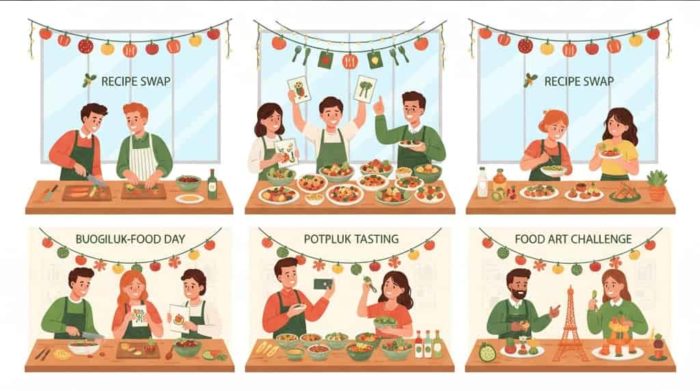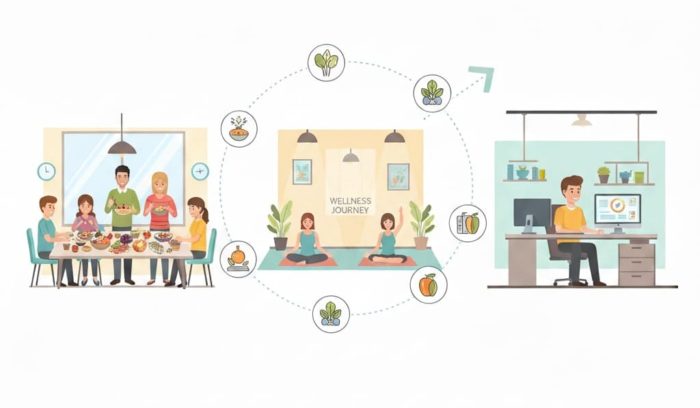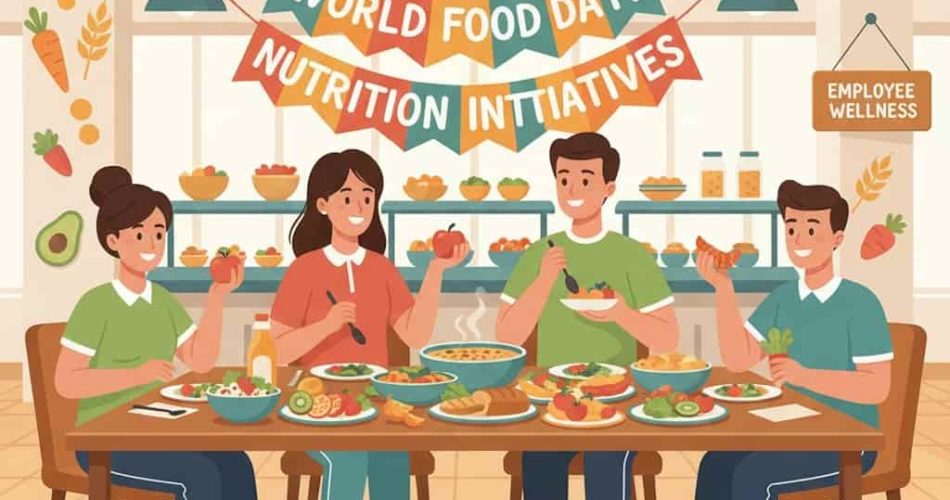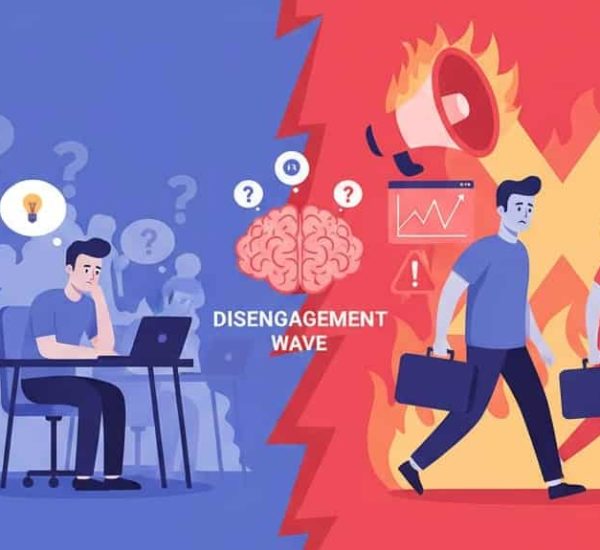Walk into any office kitchen, and you’ll find a silent story unfolding between the fruit bowl and the snack drawer. One side whispers wellness goals, the other screams deadline survival mode. On World Food Day 2025, it’s the perfect moment for companies to tip the balance in favor of well-being – not by swapping every cookie for a carrot stick, but by rethinking how food can fuel both productivity and connection.
When organizations invest in employee wellness through thoughtful workplace nutrition initiatives, it’s more than a gesture—it’s culture in action. Shared meals spark conversations, healthier snacks boost focus, and mindful eating habits can make “afternoon slump” a thing of the past. Celebrating World Food Day isn’t about restriction; it’s about showing employees that nourishment and care go hand in hand.
Because at the end of the day, food isn’t just fuel – it’s a shared experience that shapes a healthy workplace culture, strengthens employee engagement, and reminds everyone that wellness can taste as good as it feels.
Why Nutrition Belongs in Every Workplace Wellness Plan
Talk about employee wellness, and you’ll hear plenty about fitness challenges, meditation apps, and flexible schedules – but not nearly enough about what’s on the plate. Nutrition often gets overlooked in wellness programs, yet it plays a starring role in how employees think, feel, and perform every day.
A balanced diet can do more than keep people healthy; it directly impacts focus, energy levels, and even mood. Research has shown that employees who maintain healthy eating habits are more productive, less likely to experience burnout, and generally happier at work. That’s why more organizations are bringing workplace nutrition initiatives into their wellness mix – from offering healthier snack options to organizing nutrition awareness sessions.
But it’s not about forcing people into food choices. The most effective corporate wellness programs make nutrition fun, social, and accessible. Whether it’s a “Lunch and Learn” with a nutritionist or a weekly smoothie challenge, small efforts can create ripple effects across a healthy workplace culture. It’s these small, human touches that make wellness feel less like a checkbox and more like an everyday experience.

Creative Ways To Celebrate World Food Day at Work
World Food Day 2025 is the perfect excuse to turn lunch breaks and snack corners into opportunities for connection and employee wellness. A few thoughtful workplace nutrition initiatives can bring teams closer, boost energy, and create a healthy workplace culture that lasts long after the day is over.
1. The Healthy Dish Challenge
Encourage employees to share their favorite nutritious recipes or meal photos. It’s a fun way to exchange healthy eating habits and discover cultural favorites from across the team.
2. Revamp the Snack Corner
Swap chips and candy for fruits, granola, and nuts. Label snacks with playful names like “Focus Fuel” or “Energy Bites” to make healthy choices feel effortless.
3. Host a Smoothie Bar
Set up a DIY smoothie counter (or a virtual version for remote teams) with fruits, seeds, and dairy-free options. It’s interactive, energizing, and always a crowd-pleaser.
4. Celebrate a Cultural Food Day
Invite team members to share dishes from their culture. It’s a delicious way to promote inclusion and learn through food – while reinforcing a more connected workplace culture.
5. Introduce Mindful Lunch Breaks
Encourage everyone to step away from their screens, slow down, and enjoy meals without distractions. Mindful eating improves digestion, focus, and mental well-being.
6. Organize Nutrition Talks
Host a short lunch-and-learn with a local nutritionist or health coach. Bite-sized education can spark awareness around balanced eating and employee wellness.
7. Start a Hydration Challenge
Challenge employees to hit their daily water goals for a week. Simple, low-pressure, and surprisingly motivating – hydration is the easiest wellness habit to build.
8. Plan a “No-Sugar” Day
Encourage the team to go one day without added sugar. Share alternatives like fruits or flavored water to make it fun instead of restrictive.
9. Donate Meals or Volunteer Together
Use World Food Day as a chance to give back. Partner with a food bank or community kitchen – helping others adds meaning to your wellness celebration.
10. Track Participation With Simple Tools
If your team’s on Slack or Microsoft Teams, tools like AttendanceBot can help coordinate reminders or log participation for wellness activities – making it easy to keep the momentum going.
Food has a way of bringing people together, and when tied to wellness, it becomes even more powerful. Celebrating World Food Day 2025 reminds employees that health isn’t a solo mission – it’s a shared experience that builds happier, more energized teams.
How Nutrition and Leadership Shape Employee Wellness
Food fuels far more than productivity – it powers mood, focus, and connection. What employees eat throughout the day directly influences how they think, feel, and collaborate. That’s why nutrition deserves a front-row seat in every employee wellness strategy.
The Mental Health Connection
A steady diet of balanced, nutrient-rich meals can stabilize energy levels, sharpen focus, and reduce stress. When employees skip meals or rely on sugar-heavy snacks, they experience that familiar energy rollercoaster – bursts of motivation followed by the dreaded afternoon slump. Encouraging healthy eating habits helps break this cycle, improving both performance and mental well-being.
Even small workplace nutrition initiatives – like offering wholesome snacks, hydration reminders, or mindfulness-based lunch breaks – can lead to more consistent energy and better moods. In hybrid and remote teams, promoting these habits reinforces that wellness isn’t confined to the office; it’s part of the company culture wherever work happens.
How Managers Can Encourage Participation
Leaders play a big role in setting the tone for a healthy workplace culture. When managers join a World Food Day 2025 challenge, bring their own healthy dishes, or share wellness goals, it signals that these initiatives matter. Participation from leadership turns what could be “just another HR event” into a shared experience that feels authentic and inclusive.
Managers can make it easy for employees to get involved by:
- Giving teams the flexibility to attend wellness sessions or activities
- Encouraging open discussions about nutrition and balance
- Sharing personal wellness tips or favorite recipes
- Celebrating small wins and progress – not perfection
Simple gestures, like acknowledging participants in team meetings or Slack channels, can keep enthusiasm high. Tools such as AttendanceBot can help HR teams schedule and track engagement behind the scenes – but the real magic happens when leaders show up and lead by example.
When employee wellness becomes a shared effort between HR, managers, and employees, nutrition transforms from a personal choice into a collective value. And that’s the kind of culture that keeps teams motivated, balanced, and thriving long after World Food Day ends.
One Bite at a Time: The Future of Workplace Wellness
The beauty of World Food Day 2025 lies in its simplicity – one day, one table, one shared goal: to nourish people, body and mind. But what if that energy didn’t fade when the day ended? What if the enthusiasm around wellness, food, and connection became part of how the company operates every day?
That’s the real future of employee wellness – making nutrition and balance feel natural, not forced. It’s about creating an environment where a healthy workplace culture isn’t driven by reminders or rules but by shared enthusiasm. Where employees swap recipes like they swap ideas, and lunch breaks are treated as moments to recharge rather than tasks to rush through.
Forward-thinking companies are already expanding their workplace nutrition initiatives beyond single events – offering ongoing wellness stipends, mental health days, or mindful meal breaks. Some are even gamifying wellness, turning hydration goals or fruit-of-the-day challenges into small, daily wins. Every bite-sized effort counts, and over time, those small shifts add up to something powerful: a workplace that feeds both productivity and happiness.
Because true wellness doesn’t happen overnight – it happens one meal, one conversation, and one bite at a time.

Here’s My Secret Sauce to Keeping It Healthy (and Office-Friendly)
Every great workplace has a secret recipe for success – and sometimes, it’s literally in the kitchen. When it comes to employee wellness, even small shifts in how we eat can make a noticeable difference in focus, energy, and mood. The goal isn’t to turn offices into health retreats or push salads on everyone; it’s about finding that sweet spot between delicious and nutritious.
So here’s a taste of the “secret sauce” – a few realistic food ideas teams can introduce as part of their workplace nutrition initiatives without needing a full kitchen staff or a corporate wellness budget.
Breakfast That Means Business
Morning meetings hit differently when nobody’s running on caffeine fumes. Keep easy, energizing options handy:
- Whole-grain toast with avocado or nut butter
- Greek yogurt topped with fruit and honey
- Overnight oats with seeds, berries, and a dash of cinnamon
- Breakfast wraps with eggs and spinach
A little morning fuel helps employees start the day sharp – no mid-morning sugar crash required.
Lunches That Don’t Induce Naps
The afternoon slump is real, but it doesn’t have to be. Encourage lighter, balanced lunches that keep teams powered through those post-lunch brainstorming sessions:
- Build-your-own salad or grain bowl bar
- Brown rice bowls with roasted veggies and grilled chicken or tofu
- Whole-wheat wraps filled with hummus, greens, and chickpeas
- Stir-fries with lean protein and colorful vegetables
Offering variety makes healthy eating feel flexible, not forced – and encourages employees to make mindful choices that suit their workday pace.
Smart Snacks for Busy Days
When deadlines pile up, the vending machine starts calling. Beat the temptation with snacks that taste good and do good:
- Trail mix or mixed nuts
- Fresh fruit with nut butter
- Air-popped popcorn with herbs instead of butter
- Veggie sticks with hummus
Small swaps like these can keep energy steady and moods stable – the kind of subtle wellness boost that adds up over time.
Hydration With a Twist
It’s easy to forget water when you’re buried in meetings. Keep things interesting with hydration ideas that go beyond plain water:
- Cucumber, lemon, or mint-infused water stations
- Herbal teas for afternoon pick-me-ups
- Weekly “hydration challenge” with friendly team reminders
It’s simple, refreshing, and an easy win for every healthy workplace culture.
Remote-Friendly Options
For distributed teams, wellness can still be delicious. Encourage employees to share photos of their home lunches or create themed “wellness lunches” together over video calls. The point isn’t perfection – it’s participation.
Good food fuels good work. These small, thoughtful changes show employees that wellness doesn’t have to be complicated – it can start right on their plate (or in their Slack lunch thread). Combine that with creative celebrations on World Food Day 2025, and you’ll have a workplace where energy, collaboration, and care flow as easily as coffee on a Monday morning.
🌎 Sustainability Meets Wellness
Here’s a thought that sticks: what’s good for the planet is usually good for people too. When companies weave sustainability into their employee wellness programs, they don’t just change what’s on the plate – they reshape the culture around it. Think locally sourced lunches, meatless Mondays, or reusable containers instead of endless plastic forks. These small shifts make lunch breaks greener and employees more mindful of how their choices affect both their bodies and the world.
But sustainability goes beyond the cafeteria. It’s about creating a culture of conscious consumption – encouraging employees to waste less, share more, and eat with purpose. When HR teams align nutrition initiatives with eco-friendly practices, the workplace starts feeling more intentional and connected. Compost bins, farm-to-office deliveries, or “Zero Waste Week” challenges – these efforts may seem simple, but they build awareness, empathy, and a shared sense of responsibility. And when employees feel they’re part of something bigger, engagement and morale grow naturally.
A healthier workplace starts with mindful choices – for people and the planet. This World Food Day, serve up small, sustainable habits that nourish teams long after lunch is over.



